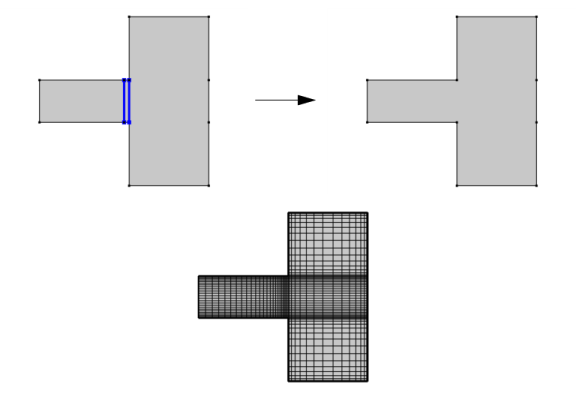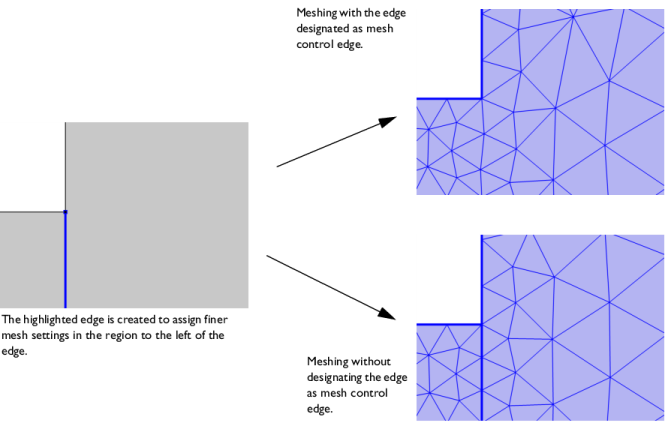Use Mesh control edges for precise control of the mesh in specific regions of the geometry, without affecting the geometry used for assigning physics.
The operation removes a selection of edges that are isolated or that are adjacent to precisely two faces (in 3D) or two domains (in 2D, as shown in Figure 7-37). The edges act as a partitioning, and are removed from the geometry, but become available when you build the mesh. Use a mesh control edge to control the element size inside a domain, or to create a mapped mesh in regions, as shown below. Mesh control edges do not change the number of domains (2D) and edges displayed in the physics settings.
To use the operation, in the Geometry toolbar, from the
Virtual Operations menu (

), select
Mesh Control Edges (

). Then enter the properties of the operation using the following sections:
Select the edges that you want to use for mesh control in the Graphics window. They then appear in the
Edges to include list. If the geometry sequence includes user-defined selections above the
Mesh Control Edges node, choose
Manual to select edges, or choose one of the selection nodes from the list next to
Edges to include.
Click the Active button to toggle between turning ON and OFF the
Edges to include selections.
Use the Include adjacent vertices check box to specify if the operation also include the ignorable start and end vertices of the edge.


